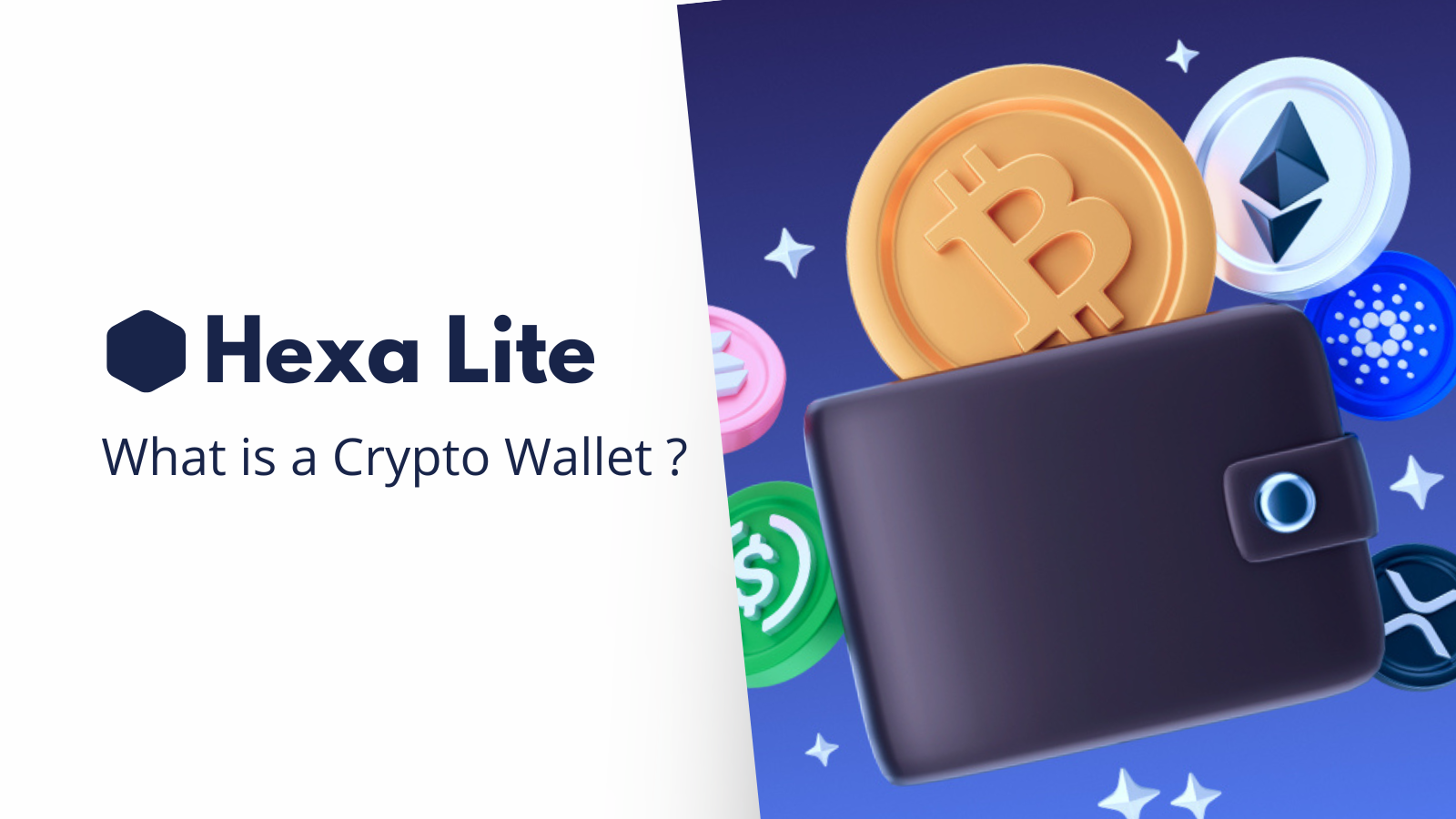· 6 min read
What is a Crypto Wallet for Beginners?
Learn what a crypto wallet is, how it works, the different types available, and best practices for beginners. Discover the essential tool for managing your digital assets.

As the world of cryptocurrencies continues to grow and evolve, understanding how to securely store and manage your digital assets is crucial. A crypto wallet is a fundamental tool for anyone looking to invest in or use cryptocurrencies. This comprehensive guide will explain what a crypto wallet is, how it works, the different types available, and best practices for beginners. Additionally, we’ll reference some of our previous articles to provide a well-rounded understanding of the topic.
Understanding Crypto Wallets
What is a Crypto Wallet?
A crypto wallet is a digital tool that allows you to store, send, and receive cryptocurrencies. Unlike traditional wallets that hold physical cash, crypto wallets store digital keys: public keys (used to receive funds) and private keys (used to sign transactions and access your funds). These keys are essential for interacting with the blockchain, the underlying technology of cryptocurrencies.
How Does a Crypto Wallet Work?
Crypto wallets interact with the blockchain to enable transactions. When someone sends you cryptocurrency, they are essentially transferring ownership of the digital coins to your wallet’s address (public key). To access and use these coins, you need your private key, which proves your ownership and authorizes transactions.
Types of Crypto Wallets
Crypto wallets come in various forms, each with its own advantages and disadvantages. Understanding these types will help you choose the one that best suits your needs.
Hardware Wallets
Hardware wallets are physical devices that store your private keys offline. They are considered one of the most secure options for storing cryptocurrencies because they are not connected to the internet, reducing the risk of hacking.
Popular Hardware Wallets:
- Ledger Nano S
- Ledger Nano X
- Trezor
Advantages:
- High security due to offline storage
- Protection against malware and hacks
Disadvantages:
- Initial cost for the device
- Less convenient for frequent transactions
Software Wallets
Software wallets are applications or programs that you install on your computer or mobile device. They can be further divided into desktop wallets, mobile wallets, and web wallets.
Desktop Wallets:
- Installed on your computer
- Examples: Electrum, Exodus
Mobile Wallets:
- Installed on your smartphone
- Examples: Trust Wallet, Mycelium
Web Wallets:
- Accessible via web browsers
- Examples: MetaMask, Coinbase Wallet
Advantages:
- Convenient and easy to use
- Suitable for frequent transactions
Disadvantages:
- Vulnerable to malware and phishing attacks
- Less secure compared to hardware wallets
Paper Wallets
A paper wallet is a physical document containing your public and private keys, usually generated by a key generator program. It often includes a QR code for easy scanning.
Advantages:
- Complete offline storage
- Immune to hacking and malware
Disadvantages:
- Risk of physical damage or loss
- Inconvenient for regular transactions
Custodial Wallets
Custodial wallets are provided by third-party services, such as cryptocurrency exchanges. The service provider holds your private keys on your behalf.
Popular Custodial Wallets:
- Binance
- Coinbase
- Kraken
Advantages:
- User-friendly and easy to set up
- Integrated with trading platforms
Disadvantages:
- Less control over your funds
- Risk of the service provider being hacked
Choosing the Right Crypto Wallet
Selecting the right crypto wallet depends on various factors, including your level of experience, investment amount, and how you plan to use your cryptocurrencies.
Security
For beginners, security should be a top priority. Hardware wallets and reputable software wallets with strong security features are recommended. If you choose a software wallet, ensure it offers features like two-factor authentication (2FA) and encryption.
Convenience
Consider how frequently you will be accessing and using your cryptocurrencies. If you plan to make regular transactions, a mobile or web wallet may be more convenient. For long-term storage, a hardware wallet or paper wallet might be more suitable.
Supported Cryptocurrencies
Not all wallets support every cryptocurrency. Ensure the wallet you choose supports the specific cryptocurrencies you intend to use or invest in.
User Experience
For beginners, a user-friendly interface is essential. Look for wallets with intuitive designs and easy-to-understand features.
Setting Up Your First Crypto Wallet
Step-by-Step Guide for Software Wallets
1 Choose a Wallet:
- Research and select a reputable software wallet that suits your needs.
2 Download and Install:
- Visit the official website or app store to download the wallet application.
- Follow the installation instructions.
3 Create a New Wallet:
- Open the application and select the option to create a new wallet.
- Follow the prompts to set up your wallet, including creating a strong password.
4 Backup Your Wallet:
- Most wallets will provide a recovery phrase (seed phrase) during setup. Write this down and store it in a secure location.
- This recovery phrase is essential for accessing your funds if you lose your device or forget your password.
5 Receive and Send Cryptocurrencies:
- Use your wallet’s public key to receive cryptocurrencies.
- To send cryptocurrencies, enter the recipient’s address, specify the amount, and confirm the transaction using your private key.
Step-by-Step Guide for Hardware Wallets
1 Purchase a Hardware Wallet:
- Buy a hardware wallet from a reputable source to ensure it has not been tampered with.
2 Set Up the Device:
- Connect the hardware wallet to your computer or mobile device.
- Follow the setup instructions provided by the manufacturer.
3 Backup Your Wallet:
- Write down the recovery phrase provided during setup and store it securely.
- Never share this phrase with anyone.
4 Transfer Cryptocurrencies:
- Use the wallet’s software interface to manage your crypto assets.
- To receive cryptocurrencies, use your public key.
- To send cryptocurrencies, confirm transactions on the device using your private key.
Best Practices for Using Crypto Wallets
Secure Your Private Keys
Your private keys are the gateway to your crypto assets. Keep them secure by following these tips:
- Never share your private keys with anyone.
- Store backup copies of your recovery phrase in multiple secure locations.
- Use wallets that offer two-factor authentication.
Stay Vigilant Against Scams
The crypto world is rife with scams and phishing attacks. To protect yourself:
- Always double-check URLs before entering sensitive information.
- Be cautious of unsolicited messages or emails requesting your private keys or personal information.
- Only download wallet applications from official sources.
Keep Your Wallet Software Updated
Regular updates often include security patches and new features. Ensure your wallet software is always up-to-date to benefit from the latest protections.
Diversify Your Holdings
Diversifying your crypto assets can spread risk. Consider holding multiple cryptocurrencies and using different types of wallets for added security.
Troubleshooting Common Issues
Lost Private Keys or Recovery Phrase
If you lose access to your private keys or recovery phrase, you will be unable to access your crypto assets. This is why it’s crucial to store backups securely. Unfortunately, there is no way to recover funds without these keys.
Sending Funds to the Wrong Address
Cryptocurrency transactions are irreversible. If you send funds to the wrong address, they cannot be retrieved. Always double-check addresses before confirming transactions.
Wallet Compatibility Issues
Ensure your wallet supports the specific cryptocurrencies you plan to use. If you encounter compatibility issues, you may need to transfer your assets to a different wallet that supports those coins.
Leveraging Our Resources
For a more in-depth understanding of crypto investments and to expand your knowledge, check out our previous articles:
- How to Invest into Crypto: A Beginner’s Guide to Crypto Investment
- Are Cryptocurrencies a Good Investment
Conclusion: Getting Started with Crypto Wallets
Understanding and choosing the right crypto wallet is a critical step for anyone looking to invest in or use cryptocurrencies. Whether you opt for a hardware wallet for maximum security, a software wallet for convenience, or a combination of both, it’s essential to follow best practices to safeguard your digital assets.
By learning about the different types of wallets, their features, and how to use them effectively, you can confidently manage your crypto investments. Remember to stay informed, secure your private keys, and be vigilant against potential scams.
For those just starting, our comprehensive guides on crypto investments and the benefits of cryptocurrencies can provide valuable insights and help you make informed decisions. Embrace the exciting world of cryptocurrencies with confidence and security, using the tools and knowledge outlined in this guide.



